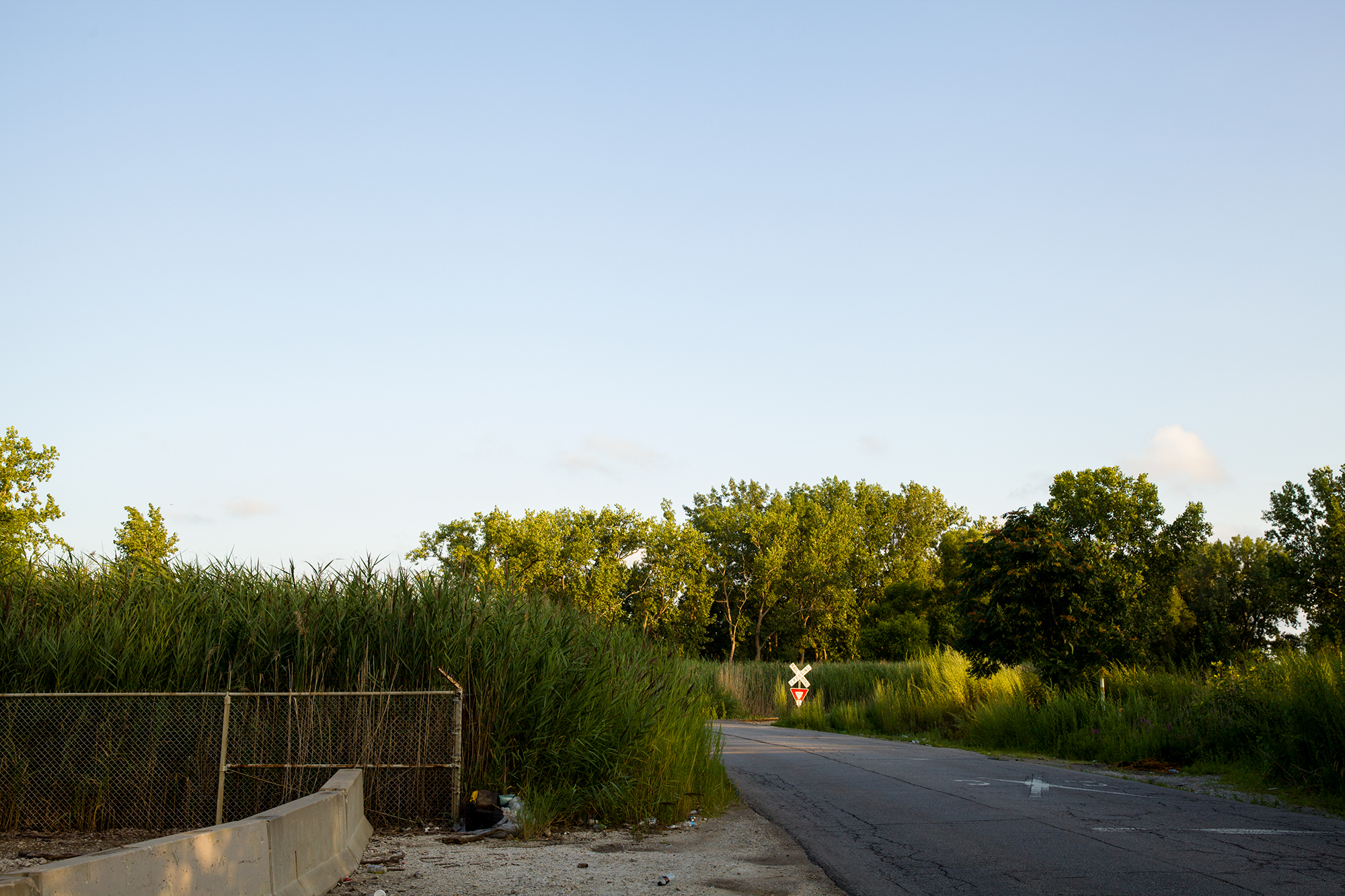Illiana
Approximately twenty miles southeast of downtown Chicago, straddling the Illinois-Indiana border, lies the industrial idyll of Wolf Lake.
PROJECT STATEMENT
My work is situated in places that have been altered by external forces. I am drawn to sites where industrial development is the catalyst of change and the consequences are a fundamentally reshaped environment. Though the transformations are not always obvious, the distinction between natural and manufactured is blurred by overlapping circumstances and the passage of time. My work attempts to reveal such complex histories.
Approximately twenty miles southeast of downtown Chicago, straddling the Illinois-Indiana (Illiana) border, lies the industrial idyll of Wolf Lake. It is part of the Calumet Region–an elongated lobe of land that follows the shore of Lake Michigan, from Racine, Wisconsin to Grand Rapids, Michigan and extends roughly twenty miles south into Indiana. This landscape was defined by glaciers that scoured the terrain 14,000 years ago. As the ice retreated, it left a unique environment of sandy ridges, lowland swales, and hummocky woodlands, all of which comprise the transition from the hardwood forests of the East to the tallgrass prairie of the West. As industrialized practices took hold, this complex ecotone was further redefined.
In the late 1860’s, raw material flowed into the region via Lake Michigan and the Calumet River. The area became home to steel mills, refineries, tanneries, and distilleries which churned out industrial products required to build the growing metropolis. Business benefited from the proximity of Chicago’s markets while Chicagoans enjoyed a healthy distance from the smoke, odor, and fouled water which was increasingly endemic to the Calumet Region. For more than a century, Wolf Lake and its surroundings were used as a dumping ground for by-products of industry: iron slag filled wetlands and effluents drained into waterways. During the Cold War, Wolf Lake was fortified with a missile base intended to defend Chicago against attack. When the Chicago Skyway was built in 1958, the lake was dredged and engineered to accommodate the infrastructure. Today, smokestacks, power lines, storage tanks, viaducts, and chain link fences define the topography. Every conceivable damage has been heaped upon the region, yet Wolf Lake remains a refuge for wildlife and sportsmen.
I found myself fascinated by the landscape when my father introduced me to the area in the 1980’s. He described fishing at Wolf Lake with his father, my grandfather, a generation earlier. Though we never explored Wolf Lake together, my grandfather was nevertheless a formative influence: he gave me my first camera, taught me how to work in the darkroom, and took me on excursions specifically to photograph. My approach to photography and appreciation of the landscape follow his guidance.
My project, Illiana, constitutes a four year engagement with Wolf Lake and the Calumet Region. The nature of this long-term process builds a personal and visual reverence for the locations I attend. My work employs a methodology that is studied, patient, and incremental. Over the long-term, I embed myself in a place in order to understand the nuances of the landscape. At the same time, I investigate historical aspects of place in order to understand what is invisible–the combined research yields information that is used as a departure point for subsequent investigations.
For this series, I referenced material from a variety of regional organizations, including: the Chicago History Museum, the Southeast Chicago Historical Museum, the Association for the Wolf Lake Initiative, and the Illinois Geospatial Data Clearinghouse. The resulting data helped me understand what has occurred and extends the history of Wolf Lake into a personal domain. My understanding of what has transpired allows existing conditions to be translated into a narrative that memorializes a collective past, yet the resulting work stares intently at the present as I see it.














